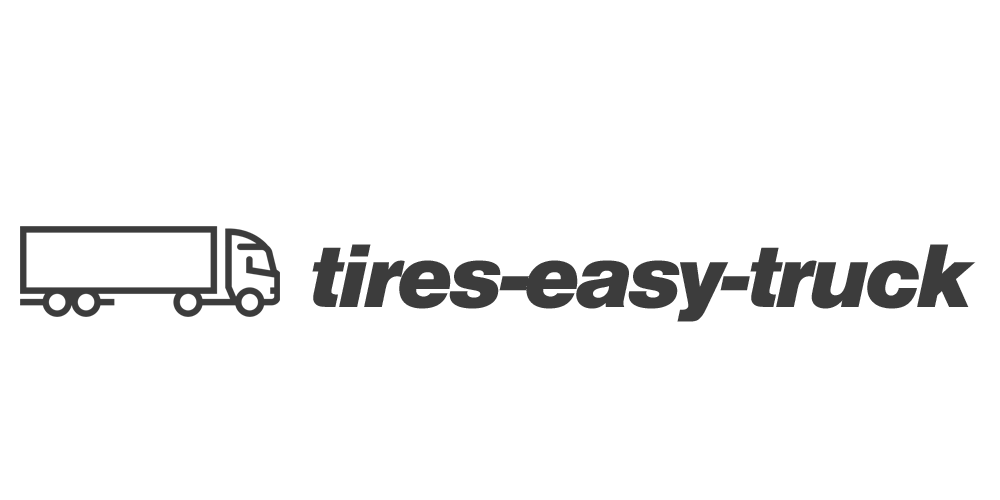Last Updated on April 22, 2024
Introduction to UTQG Ratings
Understanding the Uniform Tire Quality Grading System (UTQG) is essential for trucking companies, from fleet managers to independent operators. This system provides critical information on tire treadwear, traction, and temperature resistance, all of which are key factors affecting the performance and safety of trucks on the road.
In this article, we will explore the details of UTQG, its relevance to truck tires, and how it has evolved to become a standardized benchmark in tire evaluation.
Understanding UTQG and Its Importance for Truck Tires
The UTQG rating is a comparative tool provided by the Department of Transportation (DOT) that offers valuable insights into the expected performance of a tire. Here’s why it’s essential for truck tires:
- Treadwear Grade: This predicts how long the tire is expected to last under normal conditions, which is essential for trucks that cover long distances and require tires that can withstand extensive wear and tear.
- Traction Grade: Given the heavy loads carried by trucks, a tire’s grip on wet surfaces is vital for preventing accidents, especially during adverse weather conditions.
- Temperature Grade: Trucks generate a significant amount of heat in their tires due to their size and the heavy loads. A tire’s ability to dissipate this heat is essential to prevent blowouts and maintain structural integrity.
Understanding these ratings helps truck operators select cost-effective, safe, and suitable tires for their hauling requirements.
The Evolution of Tire Grading Systems
The history of tire grading systems is a testament to the evolving understanding of tire performance and safety. Initially, there were no universal standards, leading to confusion and inconsistent experiences for tire buyers.
The UTQG was introduced by the National Highway Traffic Safety Administration (NHTSA) in the late 1970s to respond to the need for standardized tire information.
The system has been refined over the years to reflect real-world conditions better. For instance:
- Introduction of Treadwear Testing: Manufacturers now test treadwear in controlled environments on a government track, providing a more accurate gauge of a tire’s lifespan.
- Enhanced Traction Testing: Traction testing has become more sophisticated, with more attention given to how tires perform in various wet conditions.
- More Rigorous Temperature Ratings: With advancements in technology, the grading for temperature resistance has also become more stringent, ensuring tires can withstand high heat during operation.
Although the UTQG system has limitations, such as not accounting for all possible road conditions or variations in driving styles, it has undoubtedly led to increased transparency in the tire industry and helped truck operators make more informed decisions.
This section serves as a foundational understanding of UTQG for readers involved in selecting and maintaining truck tires, ensuring they are equipped with the knowledge to choose the best tires for their needs and to appreciate the historical context of the grading system they rely on.
Components of the UTQG Rating
The Uniform Tire Quality Grading System (UTQG) provides essential information on three critical aspects of tire performance: treadwear, traction, and temperature resistance. Each of these components plays a significant role in determining the suitability of a tire for long-haul trucking operations. Let’s explore these components in detail to understand their impact on the performance and safety of truck tires.
Treadwear: Predicting Tire Longevity
Treadwear is a relative rating system that predicts a tire’s durability based on controlled tests. Here are the key points to consider:
- Controlled Test Conditions: Tires are tested on a specified government test track for a set number of miles, and the wear rate is recorded. The tire’s wear is compared to a reference tire with a baseline grade of 100. A tire with a treadwear grade of 200, for example, is expected to last twice as long as the reference tire under the same conditions.
- Grading Scale: Treadwear grades typically range from 100 to 600, with higher numbers indicating a tire that should wear more slowly, thus offering greater longevity. This is especially important for trucks that need durable tires to handle the heavy loads and long-distance trips every day in the industry.
- Real-World Relevance: While the treadwear rating provides a valuable benchmark, it should be understood that many factors, such as road conditions, driving habits, vehicle maintenance, and weight loads, can influence actual tire life.
Traction: Assessing Tire Grip
Traction grades are necessary for truck safety, indicating the tire’s ability to stop on wet pavement under controlled conditions. The traction grades are as follows:
- Grading System: Traction is rated from highest to lowest as AA, A, B, and C, with AA being the highest grade. The rating reflects the tire’s ability to stop on wet pavement as measured under controlled conditions on specified government test surfaces of asphalt and concrete.
- Importance for Trucks: Considering the heavy loads trucks carry, a high traction grade is imperative for preventing skidding and hydroplaning, which can lead to loss of control and potentially serious accidents.
Temperature: Evaluating Heat Resistance
Temperature grades reflect the tire’s resistance to generating heat and its ability to dissipate heat when tested under controlled conditions on a specified indoor laboratory test wheel. Here’s what to note:
- Grading Scale: The temperature grades, from highest to lowest, are A, B, and C. This represents the tire’s resistance to heat buildup under test conditions intended to simulate high-speed driving.
- Significance for Truck Tires: Due to their significant weight and the high friction of long drives, trucks are particularly susceptible to heat buildup in tires. A tire that can’t adequately resist heat buildup can suffer from accelerated wear and structural damage, which might lead to tire failure.
The UTQG ratings for treadwear, traction, and temperature give truck operators and fleet managers a standardized way to evaluate tire options and choose those that promise the best performance and safety.
While these ratings are a helpful guide, it’s always recommended to consider them alongside other factors such as manufacturer reputation, warranty, and specific needs of the trucking operations.
UTQG provides valuable insights but is a guide rather than an absolute measure. The real-world performance of truck tires can vary based on many factors, and the UTQG should be one of several tools used when selecting tires for commercial trucks.
Deciphering UTQG Ratings for Truck Tires
The Uniform Tire Quality Grading System (UTQG) ratings are a valuable source of information for anyone in the trucking industry. These ratings are not just numbers and letters on the sidewall of a tire; they are critical indicators of tire performance.
Understanding how to read and interpret these ratings and recognizing their significance for heavy-duty trucks can be the difference between a tire that fits the job and one that falls short.
Reading and Interpreting the Numbers and Letters
The UTQG rating comprises three components: treadwear, traction, and temperature. Each of these components provides information about different aspects of tire performance, including:
- Treadwear Number: This is usually a three-digit number that follows the letters “UTQG” on the tire sidewall. A higher number indicates a tire that may last longer than one with a lower number. For example, a treadwear rating of 300 means that the tire could last three times as long as the test tire, rated at 100.
- Traction Letter: Following the treadwear rating, you’ll find the traction grade, represented by a letter: AA, A, B, or C, with AA being the highest rating. This grade is based on the tire’s ability to stop on wet pavement as measured under controlled conditions.
- Temperature Letter: The last component is the temperature grade, which indicates how well the tire can withstand and dissipate heat. This is also a letter grade ranging from A to C, with A being the highest. It’s essential for trucks as high temperatures can lead to tire degradation and failure.
Interpreting these ratings requires understanding that they are based on controlled lab tests and may not reflect every real-world scenario. However, they offer a baseline for comparing different tire brands and models.
The Significance of UTQG for Heavy-Duty Trucks
The UTQG ratings take on additional importance for heavy-duty trucks due to the demanding nature of truck operations. Here is why the ratings are essential:
- Influence on Operational Costs: Tires with higher treadwear ratings may offer more miles before needing replacement, which can significantly affect a trucking company’s bottom line.
- Safety Concerns: The traction rating is essential for heavy-duty trucks that need reliable stopping power, especially when carrying full loads. Good traction can help prevent accidents in wet and slippery conditions.
- Heat Resistance: Given that heavy-duty trucks spend hours on the road and are subject to heavy loads, the temperature rating is crucial. A higher temperature rating suggests a tire can perform safely at highway speeds without overheating.
The UTQG ratings provide truck operators with a standardized way to judge tire quality and performance. While they should not be the sole factor in choosing tires for heavy-duty trucks, they are a critical component of the tire selection process.
UTQG and Truck Tire Selection
Choosing the right tire is a decision that can affect the safety, efficiency, and cost-effectiveness of trucking operations. The Uniform Tire Quality Grading System (UTQG) provides a set of standardized metrics to help guide this decision.
By understanding how UTQG ratings align with different trucking needs, drivers and fleet managers can make informed choices to ensure their vehicles are equipped with the best possible tires.
How UTQG Affects Tire Choice for Different Trucking Needs
Here are the ways the UTQG rating influences tire selection:
- Long-Haul vs. Regional: Treadwear is a significant factor for long-haul trucking due to the extensive distances covered. Tires with a high treadwear rating are likely to offer more mileage before they need to be replaced. A balanced combination of good treadwear, traction, and temperature ratings is essential for regional trucking, where vehicles may encounter various road conditions.
- Load Weight: Heavy loads put additional stress on tires. Trucks that carry heavy loads regularly should opt for tires with high-temperature grades to ensure they can withstand the generated heat.
- Driving Conditions: Tires with higher traction grades are preferable for trucks driving in areas with frequent rain or snow, as they provide better grip and reduce stopping distances on wet roads.
Comparing UTQG Ratings: What Truck Drivers Should Look For
When comparing UTQG ratings, truck drivers should consider the following:
- Consistency with Usage: The tire’s ratings should be consistent with the most common conditions under which the truck will be operated. For instance, trucks used in high-temperature environments should have tires with a high-temperature grade.
- Treadwear Rating for Cost Efficiency: A higher treadwear rating usually signifies a longer-lasting tire, which can be more cost-efficient in the long run. However, treadwear should be balanced with performance characteristics suited to the truck’s operational needs.
- Traction for Safety: Safety is paramount, and traction ratings are directly related to safety on wet roads. Drivers should maintain traction, especially if they drive in regions with unpredictable weather.
- Real-World Experiences: While UTQG provides a good baseline for comparison, drivers should also consider real-world experiences and reviews from other truckers who have used the tires under similar conditions.
The UTQG ratings are a valuable tool for selecting tires matched to the specific requirements of different trucking applications. By carefully considering these ratings in the context of their particular needs, truck drivers and fleet managers can make choices that enhance performance, safety, and overall value.
When selecting tires for trucking needs, it’s essential to consider UTQG ratings as part of a broader assessment, including factors such as tire construction, manufacturer reputation, and feedback from the trucking community. This comprehensive approach to tire selection helps ensure that the chosen tires will perform effectively and reliably in the intended service environment.
Limitations of UTQG for Truck Tires
While the Uniform Tire Quality Grading System (UTQG) is a valuable tool for evaluating tire quality, it has limitations, especially in commercial trucking. By recognizing these limitations and considering alternative factors, trucking professionals can ensure they choose the best tires for their specific needs.
Recognizing the Limitations in a Commercial Context
Although the UTQG rating system is informative, it is not without the following constraints:
- Standardization vs. Real-World Conditions: UTQG tests are conducted under controlled conditions that may not accurately reflect various terrains and weather conditions that commercial trucks encounter.
- Treadwear Variances: Treadwear ratings are based on a standardized course, but many factors, such as load weight, road conditions, driving habits, and maintenance practices, can influence real-world tread life.
- Subjectivity in Testing: The tests are performed by tire manufacturers rather than independent third parties, which can introduce variability and subjectivity into the ratings.
- Applicability to Heavy-Duty Trucks: Most UTQG ratings are derived from tests on passenger vehicles, meaning the data may not directly apply to heavy-duty trucks.
Alternative Factors When Selecting Truck Tires
To make the best tire choices, commercial truck operators should consider additional factors beyond the UTQG ratings, including:
- Load Index and Speed Rating: A tire’s load index and speed rating are necessary for commercial trucks, indicating the maximum load a tire can carry safely and the top speed at which the tire can operate.
- Tire Type and Application: Depending on whether the truck is used for long-haul, regional, on-road, or off-road applications, different tire designs and compositions may be more appropriate.
- Brand and Model Performance Reviews: Industry reviews and feedback from other truckers on specific tire brands and models can provide insight into real-world performance and durability.
- Warranty and After-Sales Support: A manufacturer’s warranty and the availability of after-sales support can indicate their confidence in their product and influence the total cost of ownership.
By taking a holistic approach to tire selection, trucking professionals can equip their vehicles with tires that will perform optimally under the specific conditions of their unique operating environments.
UTQG in Practice: Real-World Examples
The Uniform Tire Quality Grading System (UTQG) is a valuable resource for assessing tire quality. However, its practical application can vary significantly from the controlled conditions of testing environments. To better understand its utility, we can look at real-world case studies and insights from industry experts.
Case Studies: UTQG and Truck Tire Performance
This section provides insightful case studies that examine the relationship between the Uniform Tire Quality Grading (UTQG) system and the performance of truck tires. These studies shed light on how UTQG ratings can help truck owners make informed decisions about tire durability, traction, and temperature resistance, ultimately impacting their bottom line.
Case Study 1: Long-Haul Trucking Fleet
A fleet of long-haul trucks switched to tires with a higher treadwear rating, anticipating longer service life. Over time, the data revealed that while the tires did exhibit less wear per mile, the benefits were offset in regions with rougher road conditions, leading to the realization that UTQG ratings must be weighed against operational environments.
Case Study 2: Urban Delivery Service
A delivery service operating in an urban setting selected tires with top traction ratings (AA) to enhance safety during frequent stops and starts. The company reported a notable reduction in tire-related incidents, underscoring the rating’s relevance for trucks operating in stop-and-go traffic, particularly on wet urban roads.
Case Study 3: Construction and Off-Road Use
For trucks operating in construction and off-road conditions, temperature ratings became significant. Tires with high-temperature grades performed better under the heavy loads and high-friction conditions of off-road use, leading to fewer tire failures and associated downtime.
These case studies demonstrate that while UTQG ratings are a helpful guide, they must be interpreted in the context of specific use cases and environments.
Mechanics and Fleet Managers on UTQG
Professional mechanics often caution that UTQG ratings should not be the sole factor in tire selection. They emphasize the importance of regular maintenance and inspections to ensure tire performance aligns with UTQG expectations.
Mechanics also note that some tire brands with mid-range UTQG ratings can outperform higher-rated tires in certain conditions due to better construction quality or compound formulations.
Fleet Managers’ Insights
Fleet managers typically consider UTQG ratings as one component of a broader decision-making framework. They combine these ratings with manufacturer reputation, cost per mile, warranty offerings, and driver feedback to make final purchasing decisions. There is a consensus that while UTQG provides a standardized measure, it can only cover some factors affecting how well tires work on the road.
UTQG ratings are a helpful baseline for comparing tire options, but their real-world implications can vary. By considering case studies and expert insights, truck operators can better understand the practical applications of these ratings and select tires that will deliver optimal performance and safety in their specific operations.
UTQG ratings are more than just numbers; they are a starting point for evaluating tires’ potential longevity, safety, and efficiency in various trucking applications. Real-world experiences and professional insights are invaluable for interpreting these ratings and making the best tire selections for commercial trucking needs.
Maintaining Your Truck Tires for Optimal UTQG Performance
Proper tire maintenance is necessary to ensure the longevity and performance of truck tires. Adhering to best practices in tire maintenance helps realize the full potential of a tire’s UTQG ratings and contributes to fuel efficiency, safety, and reduced operational costs. Below are the guidelines and proactive measures that can help maintain and even extend the life of truck tires.
Best Practices in Tire Maintenance
Explore proactive measures that vehicle owners can take to extend the life of their tires and maintain optimal safety on the road. These practices involve:
- Regular Inspections: Conduct thorough inspections of tires regularly for signs of wear, damage, or foreign objects that may have penetrated the tread. Check for irregular wear patterns, which may indicate alignment or suspension issues.
- Maintain Proper Inflation: Always keep tires inflated to the manufacturer’s recommended levels. Under-inflation can lead to increased wear and higher operating temperatures, while over-inflation can reduce traction and uneven wear.
- Rotate Tires Routinely: Tire rotation helps achieve uniform wear for all tires, especially for trucks, due to their uneven load distributions.
- Alignment Checks: Ensure the truck’s wheels are correctly aligned according to the manufacturer’s specifications. Poor alignment can cause rapid and irregular tire wear.
- Balancing Tires: Tires should be balanced to prevent vibration, which can lead to premature tire wear and unnecessary stress on the vehicle’s suspension.
Proactive Measures to Extend Tire Life and Maintain Ratings
There are specific proactive measures that help drivers maximize the lifespan of their tires while ensuring they meet or exceed Uniform Tire Quality Grading (UTQG) ratings. You can enjoy safer and more cost-effective driving experiences by following the practices below:
- Use of Quality Retreads: When appropriate, use quality retreaded tires, which can be a cost-effective way to extend tire life without significantly affecting the performance of certain trucking operations.
- Proper Load Management: Avoid overloading the vehicle as it can strain the tires, leading to overheating and increased wear. Adhering to load capacity ratings is essential for tire longevity.
- Driving Practices: Encourage drivers to adopt smooth driving habits. Abrupt starts, stops, and turns can cause excessive tire wear.
- Seasonal Considerations: Be mindful of the impact of seasonal temperatures on tire pressure and performance. Adjust maintenance practices as necessary to accommodate these changes.
- Invest in Tire Protection Products: Products such as tire liners, sealants, or inflation monitoring systems can effectively maintain tire integrity and pressure.
- Training for Drivers: Educate drivers on the importance of tire maintenance and how their driving habits can affect tire life and safety.
Effective tire maintenance is an essential aspect of fleet management that can lead to safer driving conditions and more predictable tire performance. By closely following these practices, truck operators can maximize the return on their tire investments and ensure their vehicles remain reliable and roadworthy.
Conclusion & Recommendations
The Uniform Tire Quality Grading System (UTQG) has been a focal point of our extensive guide, serving as a beacon for truck tire maintenance and a pivotal component in ensuring road safety.
The UTQG ratings, involving treadwear, traction, and temperature, provide truck operators and fleet managers with a standardized benchmark for comparing tire longevity, road grip, and heat resistance. These ratings, crucial for informed decision-making, contribute significantly to the trucking industry’s operational efficiency and safety protocols.
Key takeaways:
Reflecting on the key takeaways from our exploration, the UTQG ratings emerge as a fundamental tool for selecting tires that suit the diverse and demanding requirements of commercial trucking.
The treadwear rating is instrumental in assessing tire lifespan, allowing for better financial planning and inventory management. Traction ratings are indispensable for evaluating safety on wet surfaces, a critical factor for preventing accidents in adverse weather conditions. Temperature ratings give insights into a tire’s capacity to withstand the intense heat generated by the heavy loads and long drives characteristic of the trucking industry.
However, it is essential to acknowledge the limitations of the UTQG system. While it provides a valuable framework, it does not include all variables of on-road tire performance, highlighting the need for a comprehensive approach that includes practical experience, manufacturer data, and technological advancements in tire design and materials.
Future Trends in Truck Tire Grading
As we look to the future, trends in truck tire grading may change to include more advanced and complex metrics that account for the dynamic conditions modern truck fleets face.
Innovations in sensor technology and data analytics may offer more precise, real-time tire health monitoring, leading to grading systems that can predict tire performance more accurately.
Such advancements will enhance our understanding of tire wear and operational safety, ultimately leading to more innovative, more cost-effective tire maintenance strategies.
The quest for the ideal tire is ongoing for trucking professionals who value safety and reliability. As you consider the wealth of information provided and seek to apply these insights to your operations, remember that your choice of tires is fundamental to your commitment to road safety and operational excellence.
Discover Your Perfect Truck Tire
Tires Easy Truck is your premier destination for tires that meet the highest quality and performance standards. With a wide selection of carefully evaluated tires to meet rigorous UTQG standards, we are dedicated to supporting your trucking needs. Trust in our expertise and commitment to bringing you tires that deliver safety, durability, and value.
When you’re ready to enhance your fleet’s performance and safety, choose Tires Easy Truck. We provide tires, a promise of quality, and a journey toward optimal road safety.
FAQs
What does the treadwear rating in UTQG indicate?
The treadwear rating in UTQG indicates the tire’s expected wear rate. A higher number suggests a tire may last longer than a tire with a lower rating, given similar driving conditions.
What does the temperature grade in UTQG represent?
The temperature grade measures a tire’s resistance to heat buildup under test conditions. It is graded from A to C’ with A being the highest grade, indicating the tire can withstand and dissipate heat effectively at higher speeds.
Can UTQG ratings be used to compare tires from different brands?
UTQG ratings can be used to compare tires from different brands. Still, they should be considered along with other factors such as tire type, driving conditions, and manufacturer specifications.
Does a higher UTQG rating guarantee a better-quality tire?
Not necessarily. While a higher UTQG rating suggests certain aspects of a tire may perform better, such as longer tread life or better heat resistance, it does not account for all performance factors. Other attributes like ride comfort, noise, and performance in various weather conditions are also important.
Are UTQG ratings applicable to all types of tires?
UTQG ratings are mandated for most passenger vehicle tires but do not apply to winter tires, temporary spare tires, or tires with a speed rating above 149 mph (240 km/h), such as some performance tires. Additionally, heavy-duty truck tires are not rated with the UTQG system.
How vital is UTQG rating on tires?
The UTQG rating is critical because it helps consumers compare tires based on treadwear, traction, and temperature resistance. While not the only factors to consider, these ratings provide valuable insights into a tire’s potential lifespan and safety features, particularly in wet conditions and at high speeds.
What is the best UTQG for tires?
The “best” UTQG rating for tires depends on individual needs. For longevity, a higher treadwear number is preferable. AA is the highest rating for wet traction, and A is the best for temperature resistance. However, the ideal rating should match the user’s driving conditions and performance requirements.
Do winter tires have UTQG?
No, winter tires do not have UTQG ratings. The UTQG system is not designed for winter tires and is constructed with unique tread patterns and rubber compounds to perform in cold, snowy, or icy conditions.











